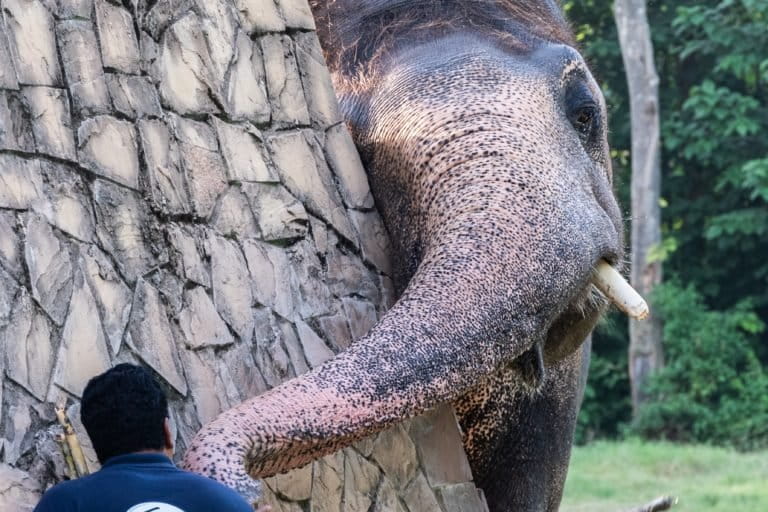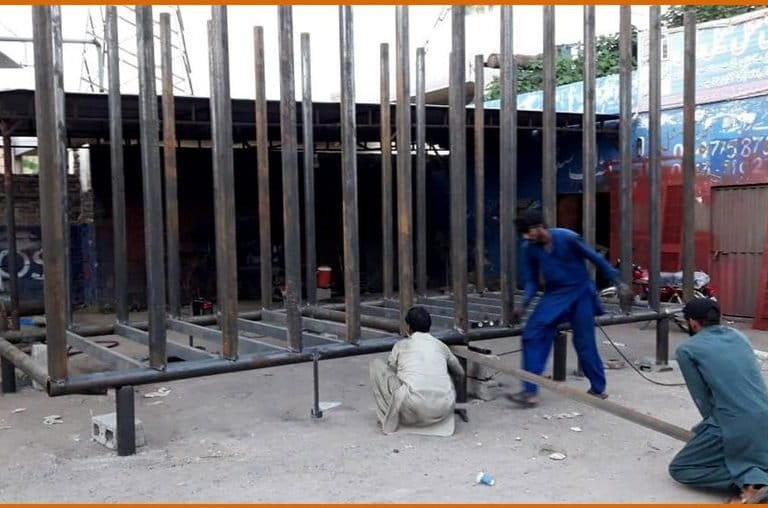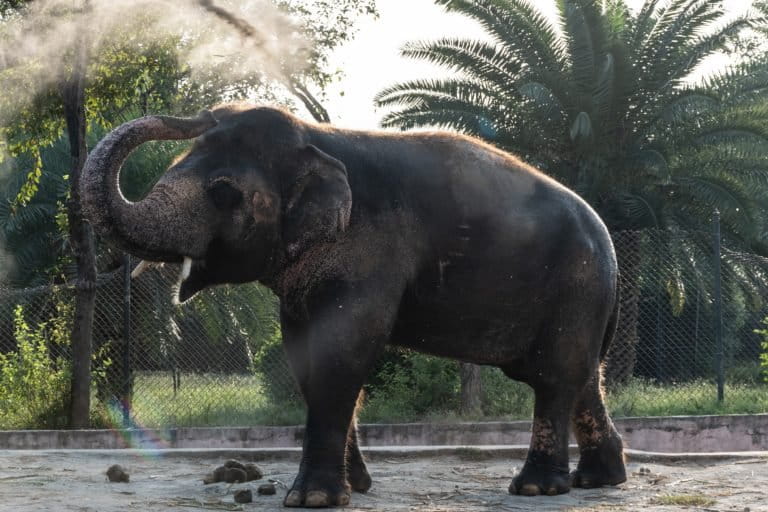- Veterinarians working to relocate an elephant dubbed the world’s loneliest from a zoo in Pakistan to a sanctuary in Cambodia say the animal is responding well to therapy.
- Kaavan was born in Sri Lanka but has spent the past 35 years in confinement at Islamabad Zoo.
- During that time, he’s grown obese as a result of a poor diet; developed cracked nails that put him at high risk of a deadly infection; and developed behavioral issues stemming from loneliness and boredom.
- A global campaign to free him culminated in a court order in May to move him out of the zoo; Kaavan is expected to be airlifted to the Cambodian Wildlife Sanctuary by the end of November.
COLOMBO — It’s no “Eye of the tiger,” but Frank Sinatra’s “My way” seems to be doing a solid job helping an overweight and distressed Asian elephant (Elephas maximus) in Pakistan get ready for a life-changing move to a sanctuary in Cambodia.
Kaavan, described as the loneliest elephant in the world, has lived at Islamabad Zoo since 1985, sent there as a diplomatic gift from Sri Lanka while still a calf. From 1990 he had a mate at the zoo, but since her death in 2012 Kaavan has languished alone, developing physical and behavioral problems amid a general lack of care.
A global campaign pushing for Kaavan to be moved out of the zoo culminated with a ruling by the Islamabad High Court in May that the elephant should be relocated to a place where he can roam free.

Since then, an army of veterinarians and caretakers have been preparing Kaavan for his move. But the elephant is overweight from years of malnourishment, at high risk of infection from cracked toenails, and exhibiting behavioral problems.
That’s where Sinatra comes in, says Amir Khalil, the Austria-based vet and director of the animal welfare organization Four Paws International.
“Music therapy coupled with other calming methods appear to be working well,” Khalil, who is overseeing the medical checks necessary to ensure Kaavan can safely make the trip, told Mongabay.
The therapy works to treat, among other things, the issue known as stereotypical behavior, stemming from years of loneliness and boredom, that sees Kaavan swing his head back and forth for hours on end.
“Kaavan appears calmer and happier than before,” Khalil said.

As someone involved in animal rescue missions, Khalil said he tries not to form strong bonds with his “patients.” But in Kaavan’s case, he said he couldn’t resist paying special attention to the elephant. While he was in Islamabad, Khalil visited Kaavan during feeding times and went on walks with him. He occasionally gave him a head scrub during his bath.
“Kaavan is still a wild animal, so I was careful while engaging with him. But I knew the benefits of getting close to him as I could win his trust,” Khalil said.
The vet also fixed Kaavan’s diet. Years of malnutrition and lack of physical exercise had left the elephant obese for his age. Previously his diet consisted mostly of sugarcane; Khalil changed it to grass and vegetables, offering him a more balanced diet. Kaavan was also crammed into an enclosure with nothing to interact with, so Khalil arranged for sand and logs to be trucked in to prepare him for life in the wild.
He found that Kaavan’s nails were also cracked and disfigured, likely a result of the inappropriate flooring and structure of his enclosure. Cracked nails don’t just cause discomfort for elephants, but also pose the risk of germs entering the body and causing infections. Kaavan’s partner, Saheli, died from such an infection, according to Khalil.

Airlifting Kaavan
If all goes to plan, Kaavan will live out the rest of his life at an elephant sanctuary in Cambodia. To get there, he’ll have to take a 4,000-kilometer (2,500-mile) flight. A special steel crate, measuring 6.5 by 3.5 meters (21 by 11.5 feet), is currently being built to transport him safely.
“Kaavan needs to get comfortable in the cage. He will be given special training to make him get familiar with the cage,” Khalil said. The training will include Kaavan stepping inside the cage voluntarily, as the team of vets have no plan to sedate him for the duration of the flight. His weight also poses a logistical challenge. Kaavan weighs 5.5 metric tons, making it likely that authorities will have to arrange for an Antonov cargo plane to fly him.

Moving an elephant from one country to another is typically done when the animal is still a calf, like Kaavan when he was moved from Sri Lanka to Pakistan, 35 years ago. Someone with vast experience in this is S.M. Seelarathna, curator of elephants with Sri Lanka’s National Zoo and the Pinnawala Elephant Orphanage. He’s facilitated several elephant transfers over the past 30 years, sending animals from Sri Lanka to Japan, Thailand, Armenia and even the U.S., and accompanying them the whole way.
“We usually select well-behaving elephant calves for the animal exchange programs, so they usually do not cause any fuss as caretakers are also present,” Seelarathna told Mongabay. “The U.S.-bound journey was the longest, but we could make the journey without any problems.”
He added that, if trained well, Kaavan should manage to travel without causing a commotion.

Preparing for a new start
Kaavan’s new home will be the Cambodian Wildlife Sanctuary, a 405,000-hectare (1-million-acre) protected forest landscape. There, officials are getting ready to welcome their special guest, including preparing a 1.2-hectare (3-acre) enclosure for Kaavan’s mandatory quarantine and rehabilitation period. After that, he will then be allowed to roam free, exploring the wilderness and mingling with the sanctuary’s other rescued elephants.
Relocating Kaavan will be a costly affair, but Free the Wild, a conservation NGO that played a lead role in the campaign to free Kaavan, and Four Paws International are absorbing the costs of transportation and associated logistics. According to Free the Wild, at least $50,000 is required for the new home setup.
There are still the bureaucratic processes to go through, including getting Kaavan’s travel documents ready. He may have to wait until the end of November to reach his new home. When he does, however, it will be away from the unhealthy confines of a zoo, and in a space where he can finally roam free.
Banner image of Kaavan, courtesy of Four Paws International.
